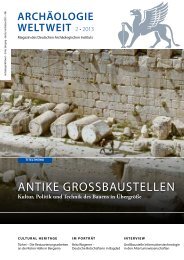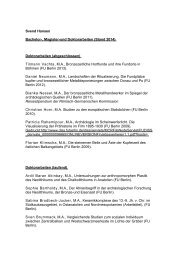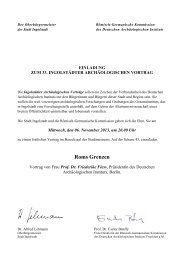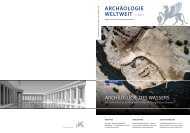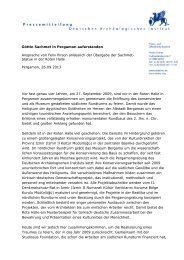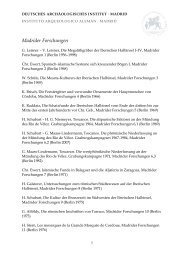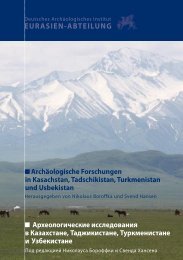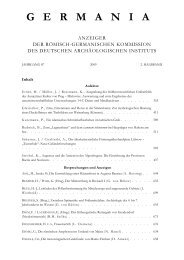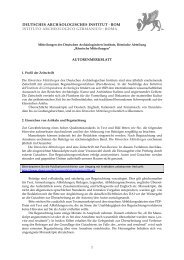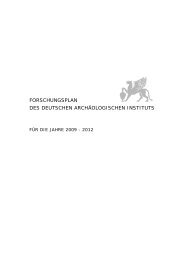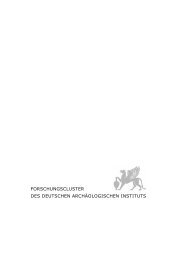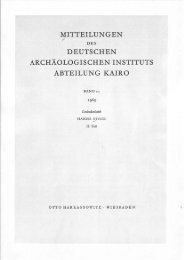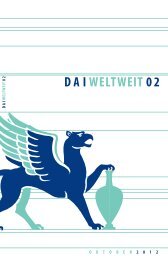Untitled - Deutsches Archäologisches Institut
Untitled - Deutsches Archäologisches Institut
Untitled - Deutsches Archäologisches Institut
You also want an ePaper? Increase the reach of your titles
YUMPU automatically turns print PDFs into web optimized ePapers that Google loves.
Tophane/Istanbul<br />
Contributions to the history of<br />
urban development<br />
As the main point of landing and embarkation<br />
and a “vestibule” to Pera in Ottoman times,<br />
Tophane is rarely missing in descriptions by<br />
Western visitors to Istanbul. Named after and<br />
dominated by its cannon foundry, the suburb<br />
was perceived as “Turkish” in contrast to the<br />
“European” quarters of Galata and Pera. At the<br />
beginning of the 19 th century it was praised<br />
for its lively and exotic atmosphere. It was,<br />
however, gradually transformed into a military<br />
area modelled after “Western” examples in<br />
the second half of the 19 th century. The stone clock tower built in 1848/49 – a significantly<br />
“European” element and the first of its kind in Istanbul – served as a landmark.<br />
Having been abandoned after the First World War, almost all of the military installations were<br />
demolished in the 1950s in favour of a new main traffic artery in order to “modernize” the<br />
city – with the significant participation of the German town planner Hans Högg. At the same<br />
time, however, single monuments that were considered “historic” – e.g. the Tophane fountain<br />
and the foundry – were “reconstructed” with the help of old engravings. The clock tower was<br />
kept but somehow vanished into no man’s land.<br />
Today Tophane again faces huge pressure to change, namely from the large-scale project<br />
Galataport and the struggles which it entails.<br />
The quarter provides a good example of the dramatic changes to the urban fabric of Istanbul –<br />
especially since late Ottoman times – and the related, more or less intensive discussions about<br />
contemporary (mostly European) ideas and (local) identities and traditions.<br />
Katja Piesker<br />
19



